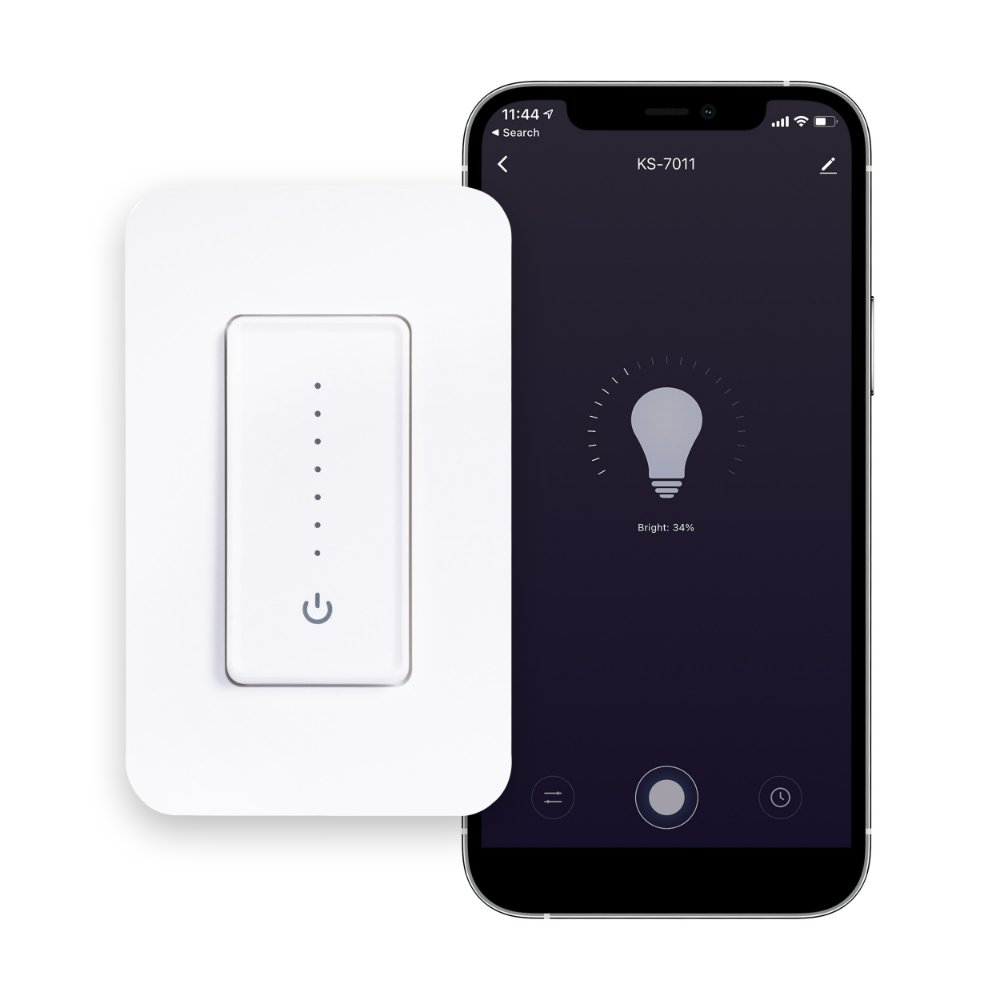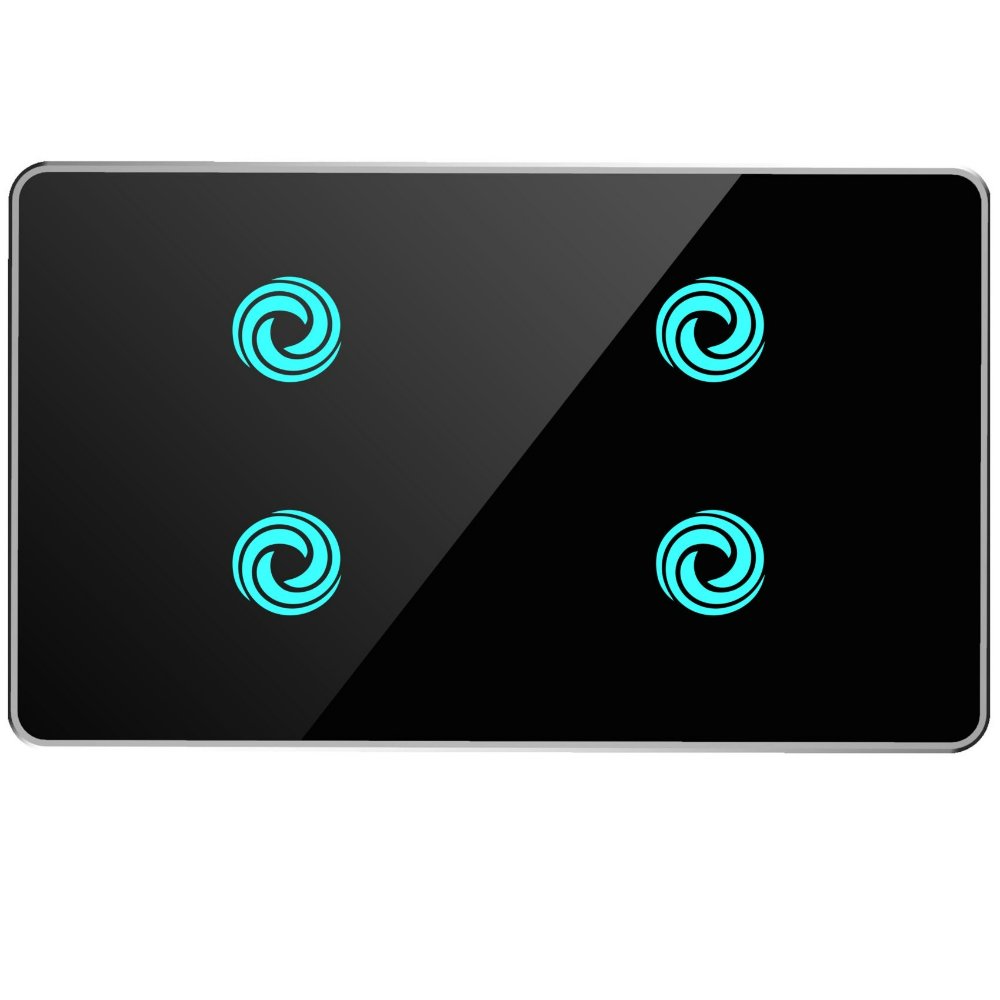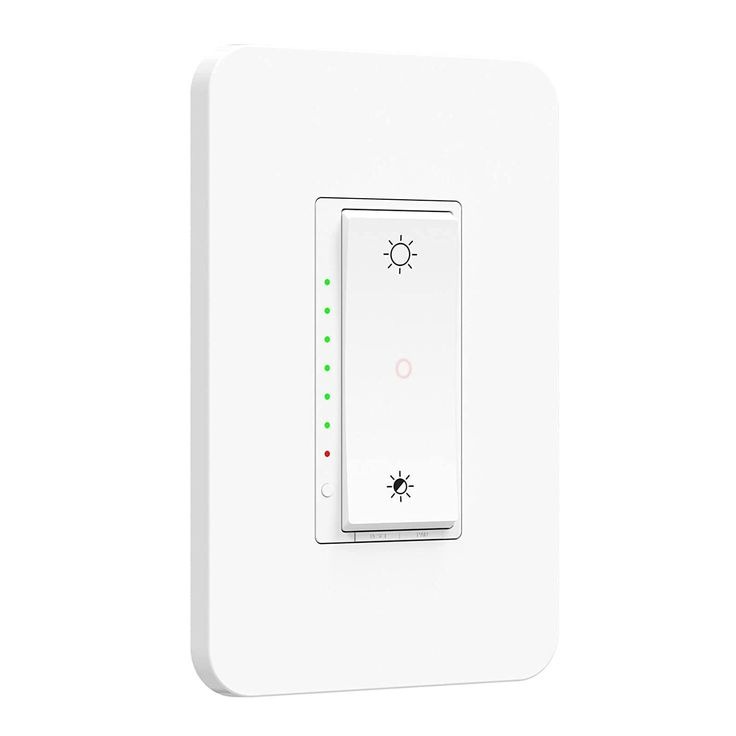Introduction to Dimmable Smart Switches
Dimmable smart switches are revolutionizing home lighting control. These switches give you the power to adjust light levels with ease. Unlike traditional switches, they connect to home networks for smart functionality. This allows you to control them remotely via smartphones or voice assistants. Upgrading to a dimmable smart switch can make your lighting more versatile. They can also make your home more energy-efficient and comfortable. In a smart home setup, these switches can integrate with other devices
for advanced scenarios. These could include setting mood lighting or syncing with alarms. Dimmable smart switches often support LED, CFL, and traditional bulbs. But remember, it’s critical to check compatibility. When you’re in the market for dimmable smart switches, consider your home’s needs. Think about the lighting type, control preferences, and desired features. In the following sections, we’ll explore the benefits, types, and more. The aim is to help you make an informed choice for your smart home.

Benefits of Installing Dimmable Smart Switches
Installing dimmable smart switches in your home offers several advantages. Here are some key benefits:
- Energy Efficiency: Dimmable smart switches can significantly reduce electricity use. By dimming lights, less energy is consumed compared to full brightness.
- Customizable Ambiance: Tailor lighting to any mood or activity. A dimmer switch allows for precise light level adjustments.
- Convenience: Control lights remotely via a smartphone or voice assistant. It makes it simpler to manage lighting without physical interaction.
- Enhanced Comfort: Achieve the perfect lighting for any time of day, which can improve overall comfort.
- Longer Bulb Life: Dimming lights can extend the lifespan of your bulbs. This is especially true for LEDs.
- Improved Security: Simulate occupancy when away from home. You can program lights to turn on and off at set times.
- Seamless Integration: Most dimmable smart switches easily integrate with other smart home devices. This allows for automated lighting scenarios tailored to your lifestyle.
By understanding these benefits, you can see how a dimmable smart switch is more than just a dimmer. It’s a versatile tool that enhances your home’s functionality and energy efficiency.
Types of Dimmable Smart Switches
When selecting a dimmable smart switch, it’s important to familiarize yourself with the types available. Here are the common varieties you can choose from:
- On/Off Dimmer Switches: They are the basic form of dimmable switches. These switches provide the ability to adjust the brightness level or turn the lighting completely off.
- Smart Dimmer Switches With Integrated App Control: These switches offer an added feature of app connectivity. You can control the lighting using your smartphone, no matter where you are.
- Touchscreen Dimmer Switches: For a more modern touch, these come with a touchscreen panel. This feature allows users to slide their fingers to adjust light levels.
- Rotary Dimmer Switches: A traditional style that requires a twisting motion to dim the lights. These switches are simple and intuitive to use.
- Smart Dimmer Switches With Voice Control: Such switches integrate with voice assistants. You can dim your lights with voice commands, offering maximum convenience.
- Wifi-Enabled Dimmer Switches: Wi-fi connectivity in these switches allows for integration with your home network. You gain the ability to manage lighting through various smart home devices.
- Scene-Setting Dimmer Switches: These switches can save preferred lighting scenes. At the touch of a button, set the perfect ambiance for any occasion.
Choosing the right type of dimmable smart switch will depend on your needs and preferences. Want to manage lighting away from home? Go for a switch with app or Wifi control. Love tech and voice commands? A voice-controlled dimmer is a smart pick. Prefer simplicity? A rotary or on/off dimmer may be best. Remember that the switch you select should enhance convenience and energy efficiency in your home.

Compatibility With Home Lighting Systems
When choosing a dimmable smart switch, ensure it fits your home lighting system. Different switches may work with various types of bulbs and fixtures. Here’s what you need to consider to ensure compatibility:
- Bulb Type: Check if the switch supports LED, CFL, or incandescent bulbs. Not all switches are compatible with every bulb type.
- Wiring Requirements: Some switches may need a neutral wire. Others can work without one. Know your home’s wiring before you buy.
- Fixture Compatibility: Make sure the switch matches the fixture. Some dimmers might not work with certain ceiling fans or lights.
- Load Capacity: Be aware of the maximum wattage your switch can handle. This prevents overload and ensures safety.
- Existing Setup: If you have a multi-switch setup, look for a 3-way compatible dimmer. This allows control from different locations.
By confirming these points, you avoid buying an incompatible switch. An incompatible switch won’t work properly and could mean wasted time and money. Always check the product specifications and, if unsure, ask for professional advice. This helps ensure that your new dimmable smart switch will work seamlessly with your home’s existing lighting.
Features to Look for When Choosing Dimmable Smart Switches
Selecting the right dimmable smart switch involves looking at key features that meet your needs. Here are essential features to consider:
- Remote Access: Choose a switch with remote functionality. Ensure it works with your smartphone or voice assistant.
- Reliability: Opt for a switch known for stable performance. You want it to respond well every time you use it.
- Ease of Use: Look for user-friendly interfaces. It should make adjusting light levels effortless.
- Adjustment Range: Select a switch that offers a wide dimming range. This grants fine control over lighting.
- Scheduling Features: Pick a switch with a timer or scheduling capability. It should let you set when lights dim or turn off.
- Energy Monitoring: Some switches can track energy use. This is handy for saving on utility bills.
- Design and Build Quality: Choose a switch that’s well-made and suits your home’s decor.
- Compatibility With Bulbs: Make sure the switch supports the type of bulbs you have.
- Installation Requirements: Consider switches that match your home’s existing wiring.
- Multi-Way Functionality: If needed, ensure the switch can work in a multi-switch setup.
Checking for these features will help you find a dimmable smart switch that adds convenience and energy efficiency to your home. It also provides the control you need to create the perfect lighting ambiance.

Installation and Setup of Dimmable Smart Switches
When you’ve picked the perfect dimmable smart switch, the next step is installation and setup. These steps are key to getting your smart lighting up and running. Here are some tips and considerations to ensure a smooth process:
- Read the Manual: Before you start, read the manufacturer’s instructions carefully. They contain important details for a successful install.
- Turn Off Power: Always turn off the circuit breaker before working on electrical wiring to ensure safety.
- Check Wiring Compatibility: Ensure your home’s wiring fits the switch requirements. Look for a neutral wire if necessary.
- Mounting the Switch: Securely install the switch in the wall box. Follow the diagram in the manual for correct wire connections.
- Setting Up Connectivity: For smart features, connect the switch to your home Wi-Fi network. Use the brand’s app to pair it with your system.
- Configuration: Set up features like dimming range, schedules, and integration with other devices through the app.
- Testing: Once installed, test the switch to confirm it works. Check remote access and dimming functionality.
Installation might need professional help if you’re not confident with electrical work. Some complex setups or older homes could have wiring that’s not straightforward. If unsure, it’s best to hire an electrician to ensure a safe and proper setup. An experienced professional can also help with configuring the switch to your smart home ecosystem.
Integration With Smart Home Ecosystems
When adding a dimmable smart switch, it’s crucial to think about how it will integrate with your existing smart home ecosystem. A seamless integration can take your home automation to the next level by creating interconnected devices that work harmoniously. Here are things to consider for integration:
- Smart Home Platforms: Check if the switch is compatible with platforms like Apple HomeKit, Google Home, or Amazon Alexa. This allows for simple voice command and app control.
- Interconnectivity: Look for switches that can ‘talk’ to other smart devices. For instance, your smart lights might interact with smart locks or thermostats.
- Automation Scenarios: Pick switches that support setting up automation. This means lights can adjust based on the time of day or when you enter a room.
- Ease of Setup: Choose switches that are easy to connect to your network. The simpler the setup process, the faster you’ll have your integrated smart home.
- Firmware Updates: Ensure the manufacturer offers regular updates. This keeps your switch working with the latest smart home technologies.
Integrating your dimmable smart switch with other smart home devices not only increases convenience but also enhances security and energy efficiency. With a well-integrated system, your lighting can react intelligently to changes in your environment or schedule, offering an unmatched level of comfort and automation in your smart home.
Cost Considerations and Energy Savings
While selecting a dimmable smart switch, cost is a key factor. The initial investment might seem high. But it’s important to consider the long-term savings. Smart switches can lead to significant energy savings. They do this by adjusting light levels based on need or presence in a room.
By using dimmable smart switches, you’re choosing energy efficiency. Dimmed lights draw less power than those at full brightness. This can lead to lower energy bills over time. Some switches also come with energy monitoring features. These features help track and manage your electricity usage.
Looking at the bigger picture, energy-efficient homes have a smaller carbon footprint. By reducing energy consumption, you are contributing to a more sustainable environment. Furthermore, since dimmable smart switches can extend bulb life, you save on replacement costs too.
In summary, the savings from lower energy bills can offset the upfront cost of a dimmable smart switch. With added benefits of sustainability and increased bulb lifespan, the investment becomes even more valuable. Be sure to weigh these long-term financial and environmental gains against the initial expense.